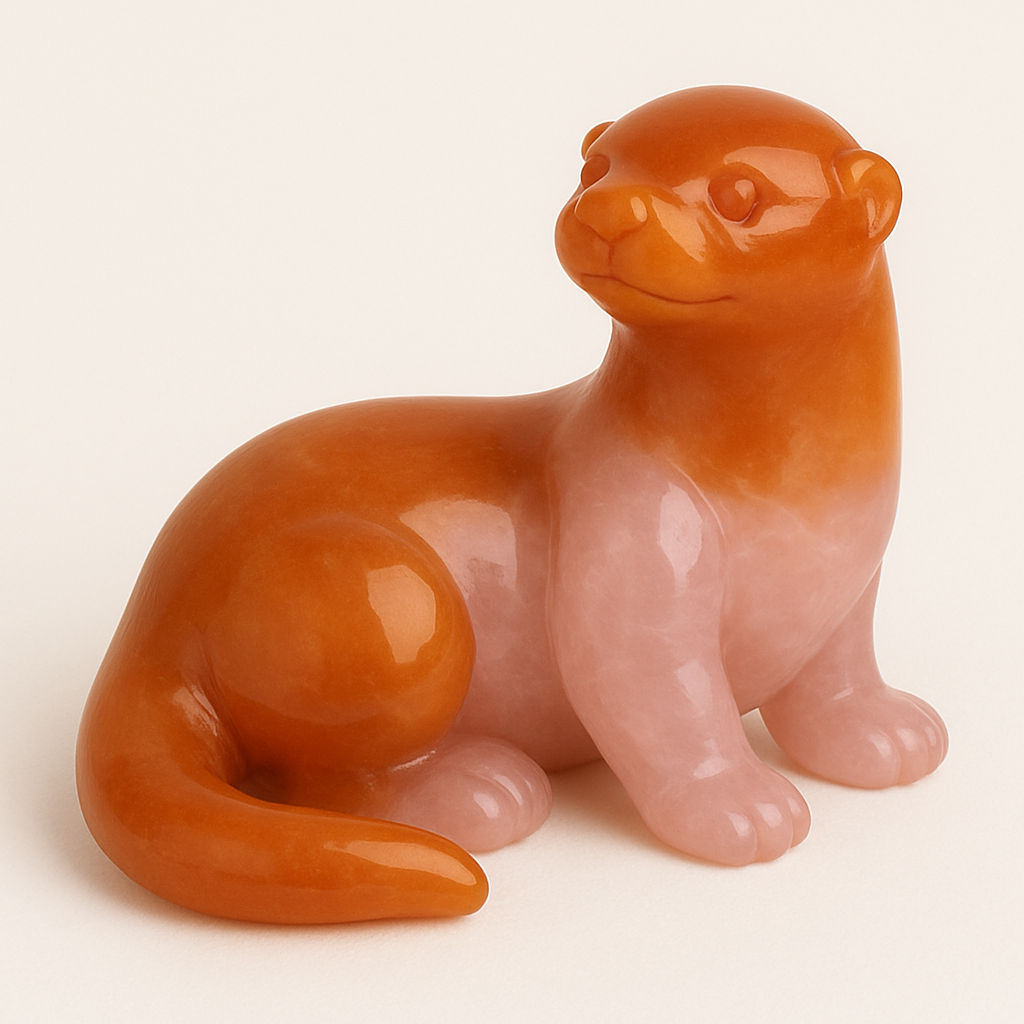
The Symbolism of Otters
Share
Playful, fluid, and delightfully unguarded, the otter moves through river and sea with an energy that is both innocent and wise. It floats, spins, and glides—not to escape, but to enjoy the currents of life. Yet beneath its joy lies instinct, intelligence, and deep relational attunement. The otter is an emblem of emotional freedom, sacred play, and the healing that arises when one remembers how to feel safely and fully.
To contemplate the otter is to encounter the archetype of the open-hearted wanderer, of the one who restores the soul through joy, and of the self that finds strength not in control, but in flow.
The River Dancer in Cultural Memory
In Native American traditions, the otter is often seen as a symbol of feminine medicine, carrying the energies of curiosity, nurturing, and inner child wisdom. It is said to teach how to live without fear, how to trust others again, and how to release the armor of the past through connection and play. The otter appears in stories as a gentle guide, one who fosters cooperation, emotional renewal, and lightness of being.
In Celtic lore, the otter is considered a protector of the sacred waters, a companion to those who seek emotional healing and spiritual rebirth. Its presence was seen as a blessing, a sign of good fortune and harmonious movement through inner tides.
Across many traditions, the otter is never feared, yet always respected—not for aggression, but for the deep resilience it expresses through joy.
Floating, Playing, and the Power of Trust
Otters spend much of their time in water, where they float on their backs, groom each other, hold hands while sleeping, and play in groups. This behavior is not frivolous—it is ritualized bonding, a demonstration that emotional connection is a survival trait, not a luxury.
They create tools, build dens, and raise their young with care—but always within a rhythm that honors ease, lightness, and flow. They teach that the soul thrives not through constant striving, but through moments of delight, touch, and togetherness.
The otter does not seek control of its environment. It moves with it, reminding the seeker that when emotions are met with trust rather than resistance, they become currents that carry rather than drown.
Resonance with the Energy Centers
The otter resonates primarily with the orange-ray energy center—the sacral chakra, which governs emotional fluidity, creative play, intimacy, and the balance of self within relationship.
Its life is a radiant example of orange-ray expression: playful without irresponsibility, open without naivety, connected without enmeshment. The otter teaches that the emotional body is not an obstacle to the spiritual path—it is part of the path, and that healing often begins in laughter and touch.
There is also a secondary resonance with the green-ray energy center—the heart chakra, which governs unconditional love, forgiveness, and the soft power of receptivity.
Otters exhibit high levels of affection, both toward family and companions. They do not isolate; they bond. They demonstrate that love is not always solemn—it may come as joy, and that the heart opens widest when it feels safe to relax into presence.
Together, orange and green shimmer through the otter as:
emotion anchored in warmth,
connection arising from play,
and love that flows like water, healing without force.
The One Who Heals Through Joy
To walk—or float—with the otter is to remember that delight is not distraction, that play can be prayer, and that the soul softens not through discipline alone, but through trust returned to the body and the heart. The otter teaches the seeker to release what weighs down the emotional self, to rediscover safety in connection, and to embrace life not as a task, but as a dance.
The otter does not resist the current.
It plays with it.
It does not hide from love.
It invites it through joy.
It teaches:
Let go with grace.
Feel freely.
And let the heart rise, like a child floating on sacred waters.